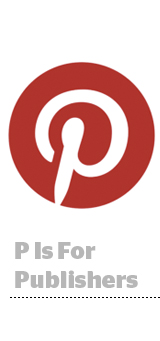 When it comes to driving traffic for publishers, Facebook is king. Publishers receive 90% of their traffic from the social network, according to social analytics firm SimpleReach.
When it comes to driving traffic for publishers, Facebook is king. Publishers receive 90% of their traffic from the social network, according to social analytics firm SimpleReach.
But what about Pinterest? While the site crossed 100 million monthly active users (MAUs) this year, that’s a fraction of Facebook’s 1.5 billion MAUs, and trails behind Instagram’s 400 million, Twitter’s 300 million and Snapchat’s 200 million.
While Pinterest makes little impact among publishers, the platform still has value. Chartbeat puts referrals for Pinterest at less than 1%. SimpleReach puts referrals from Pinterest at just over 2%, based on data from its network of publishers. That’s enough to put it in third place behind Facebook and Twitter.
Those numbers skew much higher for publishers that have figured out Pinterest. These publishers tend to specialize in DIY content and see Pinterest as their top or second-highest source of referral traffic.
SimpleReach found that 79% of Pinterest referral traffic comes from the top 10 publishers on its analytics platform. Food publishers also receive high referrals, with many seeing 60% of their traffic come through Pinterest – far greater than the 2% average.
DIY-focused publisher and ecommerce store Brit + Co. and Refinery29 both receive significant traffic from Pinterest, though they declined to quantify it.
The key to success on Pinterest is alignment with the interests of its audience.
“Anytime you’re considering going into a new channel, a publisher should make sure it’s a fit for its brand,” advised Alida Brandenburg, Refinery29’s director of social media strategy. “Is it an audience you have right now? Or is it one you’re trying to gain? What are you trying to accomplish and what’s your KPI? Pinterest is not an exception to that.”
“DIY and creativity are core to Pinterest,” added Cecelia Cox, VP of marketing for Brit + Co.
For publishers whose content resonates with the Pinterest audience, the platform can be very giving. For one, it actually links out to the publisher. And posts on Pinterest refer traffic longer than other social networks.
“We have more than double that follower content on Twitter, but Pinterest is a larger traffic driver,” Brandenburg said, because the posts refer traffic for much longer. Wiselytics puts the half-life of a tweet at five minutes, and the half-life for a pin at three and a half months.
“Pinterest is the platform that keeps on giving,” Cox said. Brit + Co. has observed the same content pick up year after year, around Halloween, for example. Creating pins is “a long-term seasonal play,” she said.
When Brit + Co. pays to amplify those posts at the beginning of the season, it’s yielded huge returns later, one reason Brit + Co. finds promoted pins “efficient,” according to Cox.
Edward Kim, founder and CEO of SimpleReach, agrees, with a caveat.
“You’re never going to get quite as cheap as amplifying a Facebook post,” he said, “but even on Pinterest it can get pretty cheap,” especially if the post already has strong organic engagement.
He noted a further difference between Facebook and Pinterest content, one that may minimize click-through rates for publishers.
While Facebook articles often tease the full story, requiring a click to read more, top-performing Pinterest images are often self-contained, like a five-image series showing a braiding tutorial.
Refinery29 and Brit + Co. are largely okay with content consumption that doesn’t happen on their owned-and-operated site, a view shared by many other platform-focused publishers. Readers who consume content on Pinterest still end up exposed to the brand and it’s a way to build overall readership.
“If the audience member is being exposed for the first time, we consider that a win,” Refinery29’s Brandenburg said, citing Pinterest as a key to audience development. “We want to be where our readers are.”
Pinterest, for its part, is starting to make an effort to recruit and nurture publishers.
Six months ago it began focusing on media partnerships, led by Robert MacDonald, whose goal is to help publishers “activate the value exchange.” That means putting encouraging “Pin It” buttons on their sites and creating pins customized to succeed on the platform, like ones with a collection of vertical images.
Following such best practices yielded results for Brit + Co. The publisher said 40 million Pinterest users see its content on a monthly basis, which translates to about 40% of Pinterest users.
“We believe that having a platform for the audience to connect with the brand and content we’re creating is just as important as people coming to our site,” Cox said.
Both publishers create content that’s more easily consumed on Pinterest, like the image groupings that don’t require click-outs. Having tailored content is key to generating engagement.
Because of the importance of images, Brit + Co. will often A/B test images it uses for promoted pins. Brit + Co. notes that wedding-related content performs well on Pinterest, while “practical” content or items like agendas do well on Facebook, so it plans content by thinking about what will perform best on each platform.
For Refinery29, nail art has been a breakout category. It also uses Pinterest for market research, to see what trends are popping that might warrant coverage.
“If there’s an upward trend in sustainable gardening tips, or men’s ties as belts, you can reverse engineer content and play to it,” Brandenburg said.
Pinterest wants more content on its site that goes beyond DIY, with a sales pitch to advertisers touting that “Pinterest is where people go to plan their future.”
Travel-related content performs well on Pinterest, one area where the platform is breaking free of its DIY roots.
But for now, it appears those top 10 publishers – and the recipe and DIY bloggers trailing behind them – have the best prospects in diversifying their traffic beyond Facebook using Pinterest.













